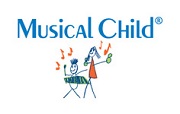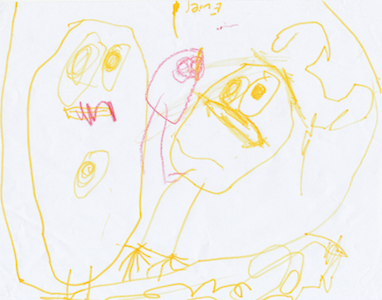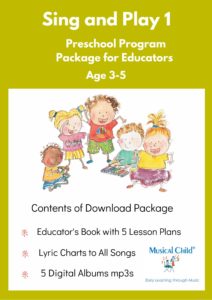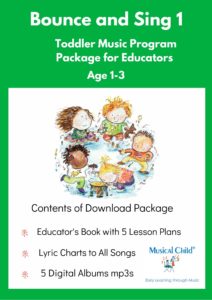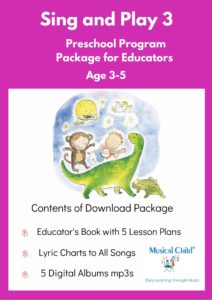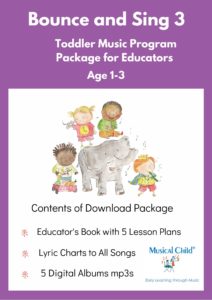Children are social animals and love to see themselves connected.
This drawing by a three year old is a fine example of how a child thinks. She has sandwiched herself cosily between the two adults. She is smaller but has a dominant place up high next to their heads. I like to imagine that the child and the adult on the right are deep communication, gazing at each other while the adult talks (or sings!)
Making music together is a fundamental way to deepen social bonds with significant people in the child’s life such as mother, father or daily care-giver. Children don’t care whether or not you have so-called “musical talent”, they only care that you give your love and attention to them. So sing at every opportunity. It lightens everyone’s heart. You can sing about a transition, say from playing on the floor with the child to moving to the laundry to deal with the washing. Just make up some words about what you are doing and sing it to the tune of your favourite song e.g ‘You Are My Sunshine’ becomes ‘I’m Doing the Washing’.
Children learn in groups
Children are social to the extent that their adults are social, so if you want highly socialised children, you need to take them out and introduce them to other people. Group music making is a wonderful way to introduce your child to the wider world so that everyone, adults and children alike, can make new friends. The social bonding brain chemical is released when we sing together. It makes us feel good and strong and connected. Anthropologists, biologists and neuroscientists now think that music was the primary means of communication, predating the development of language, in our deep evolutionary past. David Attenborough is one such advocate and so was Charles Darwin.
A wonderful song to promote social bonding is the dance tune The More We Are Together because the last line is “the happier we’ll be!” Social music-making is a peace activity, it encourages harmony in every sense of the word.
SOCIAL-EMOTIONAL DEVELOPMENT
Children’s social development is strongly linked in with their emotional development so in the literature on early childhood the two domains are often written about together under the heading “social-emotional development’.
If you would like to read more about social-emotional development here is a link to a bulletin from Syracuse University Early Childhood Direction Center.
If you would like to influence the social-emotional development of toddlers in your care, try one of our toddler programs for a couple of months. You’ll find the circle dance The More We Are Together in the Bounce and Sing 4 Toddler Music Program.
